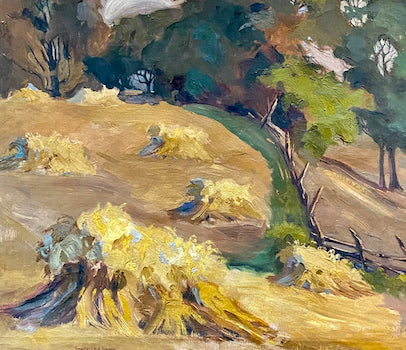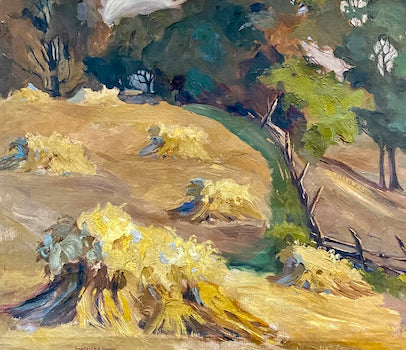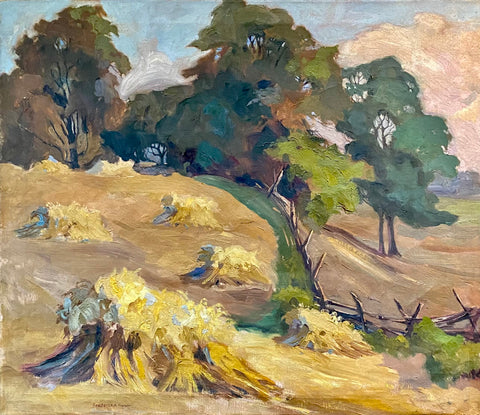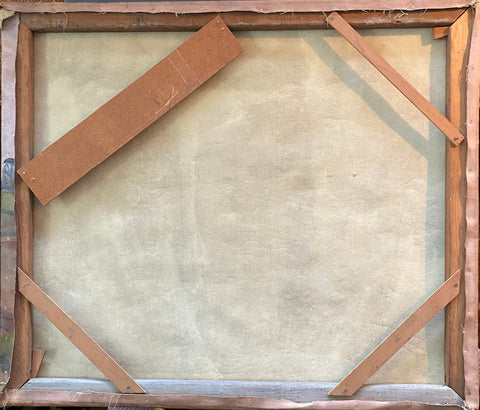FREDERICK A. FRASER "UNTITLED (STOOKS & SPLIT RAIL FENCE)" c.1930
$2,700.00
To zoom in, click on each image and mouse over.
Description:
- Dated c. 1930
- Oil on canvas
- Signed
- Image: 22 ¾ x 29 ¾ inches
- Unframed
- Condition: Very good
The Artist: Frederick A. Fraser was a Canadian watercolour and printmaker.
Fraser was an artist who contributed to the distinctive tradition of Canadian painting. He was known for watercolours and wood engravings and produced works in oil as well.
At age 21, Fraser began attending night classes at the Ontario College of Art (OCA) and studied regularly from 1918 to 1929. At OCA, he studied under some of Canada’s best instructors and recognized landscape artists including George Reid, Charles MacDonald Manly, John William (J.W.) Beatty, Arthur Lismer and James Edward Hervey (J.E.H.) MacDonald.
Hired as an art instructor at Western Technical-Commercial School in Toronto, Fraser taught still life, life drawing, watercolour and lettering from 1932 to 1963 alongside Lawrence Arthur Colley (L.A.C.) Panton. One of Fraser's most well-known students was Harold Barling Town, a founding member of the Canadian Painters Eleven group of abstract artists. Another of Fraser’s students was Vancouver Island-based woodblock artist Graham A. Scholes.
From 1926 to 1956, Fraser exhibited with the Ontario Society of Artists, Royal Canadian Academy of Arts, Canadian Society of Painters in Water Colour, Canadian National Exhibition, Canadian Society of Graphic Art and the Art Association of Montreal.
The Story: This painting shows a grain harvest, likely oats due to light yellow colour and fluffy heads. The cut grain has been bundled into sheaves and then piled into stooks. Grain can be very tender and must be handled carefully. If raked into rows like hay, the grain could ‘shell out’ of the heads and be lost. Before the binder was invented, the crop was cut by hand with a scythe, or later a horse drawn reaper. An armful of cut grain was gathered and tied with some strands of the stock. With at least three sheaves, they can be stood together. Then more sheaves are added to reduce the number of stops when collecting the harvest to take to the thrasher. The heads of the grain are always stood up to dry in the sun. Depending on the land and the weather the grain might have to dry for several days. In the old days the grain had to be transported, by wagon to where it was thrashed.
Shipping information: Packaging and shipping within Canada is $110. Signature is required upon delivery. At checkout, you will have the option to insure your purchase for shipping from the drop down menu. International shipping is available. If located in the Greater Toronto Area, no charge for shipping and packaging if picked up from Wall Fiction's office; call before purchasing.
Terms: All sales are final. No refunds or exchanges. See "Buy Art" in the main menu for more information.
Item No. FAF0114





Share this item: